 | near Dayton, Mason County, Washington, USA |
 |
LOCALITY IMAGES
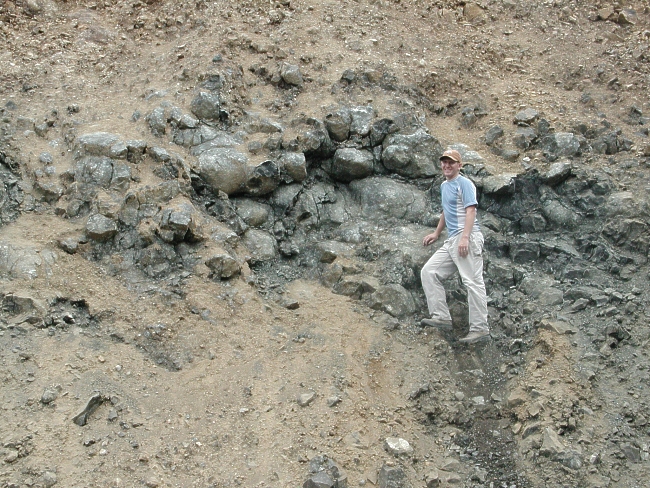
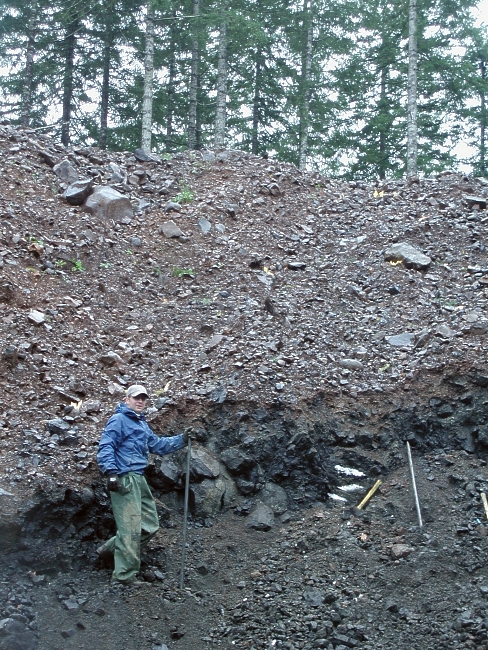
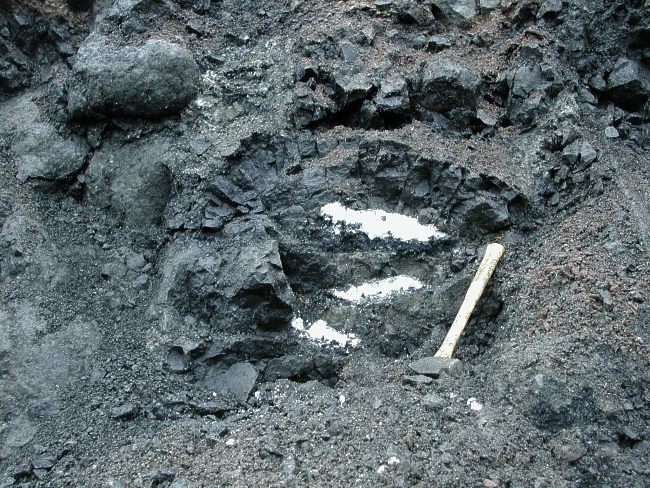
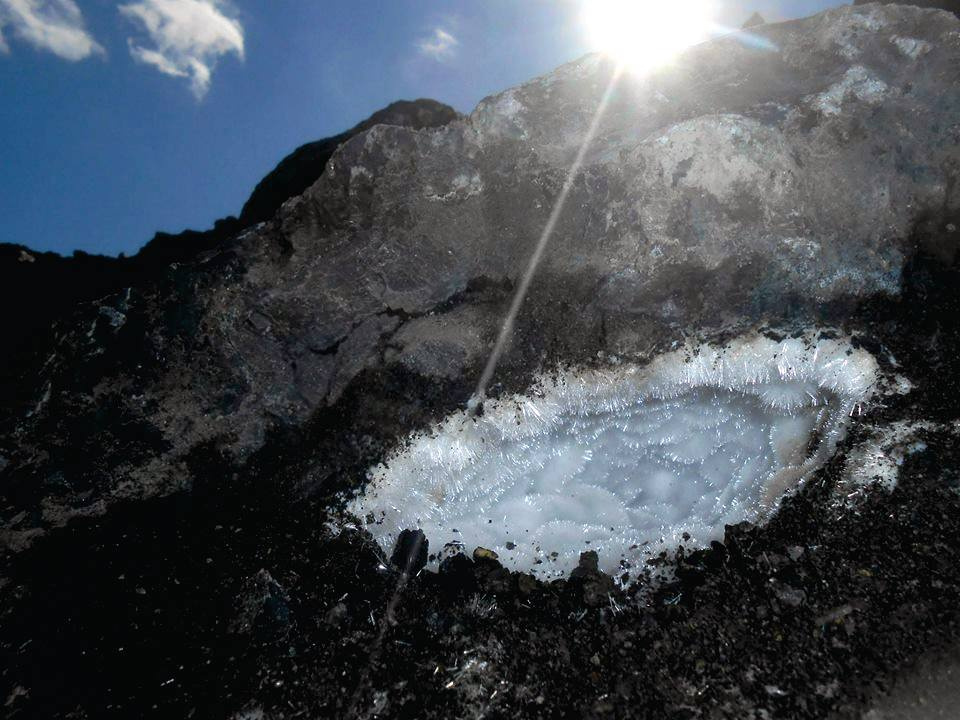
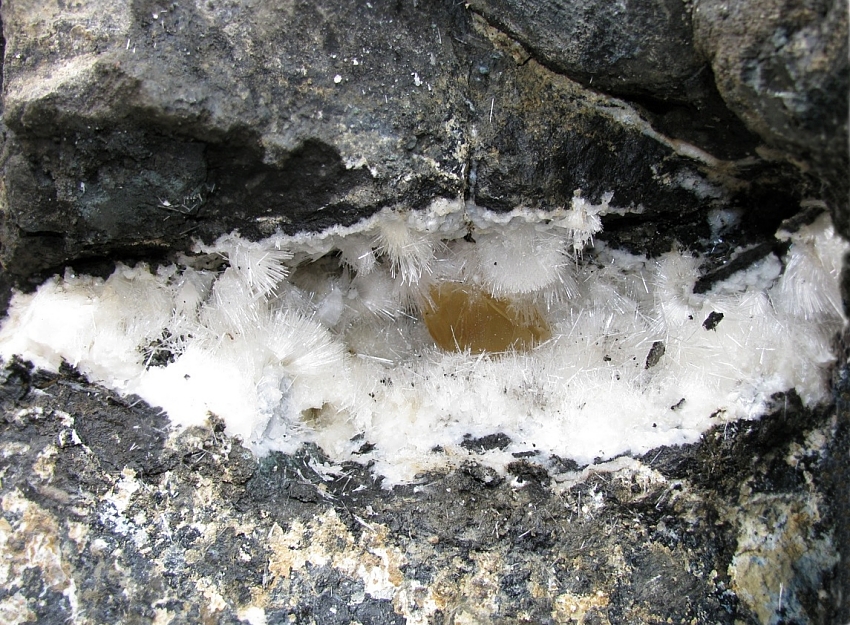
GEOLOGY
Crescent Formation - Late Paleocene to middle Eocene (62-48 Ma). The Crescent Formation is comprised of a large volume of submarine/subaerial basalt. The Crescent basalts are among the oldest basalts in this region and makeup the basement of the Coastal range. Babcock et al. (1992) concluded that the Crescent Formation basalts erupted into a subsiding rift basin along the western coast approximately 60 mya. Exposure of the Crescent formation can be found as a continuous swath defining the northern, eastern, and southeastern edge of the Olympic Peninsula. Based on gravity studies, the Crescent Formation is thought to extend eastward beneath the Puget Sound to Seattle. Most of the Crescent Formation, especially on its eastern edge, is covered with Quaternary glacial till deposits.
Exposure of the Crescent Formation near Dayton is comprised primarily of black pillow basalt that has been altered to a low grade (sub-greenschist facies) metabasalt. Centimeter to decimeter scale zeolite filled vugs are found within the interiors of individual pillows and along planar trends parallel to flow contacts. Contact quarry operator for current collecting status.
Interest in this quarry as a world-class mineral locality first began in 1988, with an article published by Raymond Lasmanis in the Rocks & Minerals, January/February 1988 issue (see full reference below).
MINERALS
* photographed





GEOLOGY
Crescent Formation - Late Paleocene to middle Eocene (62-48 Ma). The Crescent Formation is comprised of a large volume of submarine/subaerial basalt. The Crescent basalts are among the oldest basalts in this region and makeup the basement of the Coastal range. Babcock et al. (1992) concluded that the Crescent Formation basalts erupted into a subsiding rift basin along the western coast approximately 60 mya. Exposure of the Crescent formation can be found as a continuous swath defining the northern, eastern, and southeastern edge of the Olympic Peninsula. Based on gravity studies, the Crescent Formation is thought to extend eastward beneath the Puget Sound to Seattle. Most of the Crescent Formation, especially on its eastern edge, is covered with Quaternary glacial till deposits.
Exposure of the Crescent Formation near Dayton is comprised primarily of black pillow basalt that has been altered to a low grade (sub-greenschist facies) metabasalt. Centimeter to decimeter scale zeolite filled vugs are found within the interiors of individual pillows and along planar trends parallel to flow contacts. Contact quarry operator for current collecting status.
Interest in this quarry as a world-class mineral locality first began in 1988, with an article published by Raymond Lasmanis in the Rocks & Minerals, January/February 1988 issue (see full reference below).
MINERALS
|
| NaAlSi2O6 . H2O
- Occurs as small colorless trapezohedral crystlas lining some amygdules. Transparent crystals turn opaque when removed from the ground due to dehydration.
|
(K,Na)Ca4Si8O20(F,OH) - 8H2O
- Occurs as translucent crystals to 1". Small crystals appear cubic due to absence or pyramidal faces. Crystals turn opaque white due to dehydration.
| CaCO3
- Occurs as beautiful tea-colored rhombohedral crystals. Twins are common. Crystals are found in vugs associated with natrolite and/or analcime. Crystals are phosphorescent under short- and long-wave ultraviolet light. | (Mg,Fe)3(Si,Al)4(Mg,Fe)3O10(OH)8
- Massive chlorite occurs interstitial to individual pillows and as matrix grains within the metabasalt. Chlorite is a product of low-grade metamorphism.
|
Na2Ca2Al6Si9O30 - 8H2O
- Occurs as fine fiber-like sprays with individual needles to 1"
| Na2Al2Si3O10 . 2H2O
- Occurs as radiating crystal groups lining large pockets up to several feet long. Some natrolite pockets also contain a late stage clay mineral that coats the needles. Some pockets are completely filled with laminated clay.
| FeS2
- Occurs as mm-sized disseminated grains in altered basalt adjacent to amygdules.
| |
* photographed
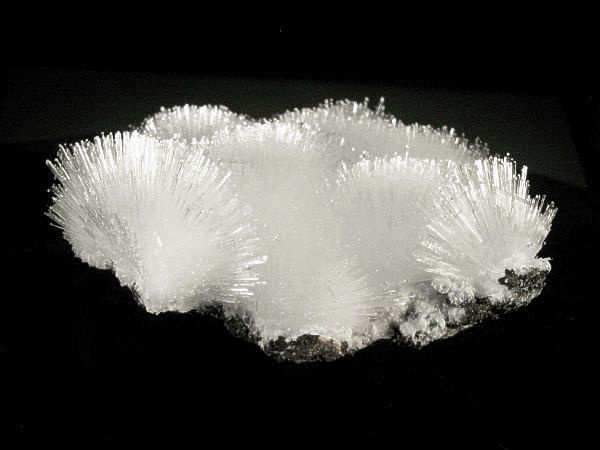
NATROLITE |
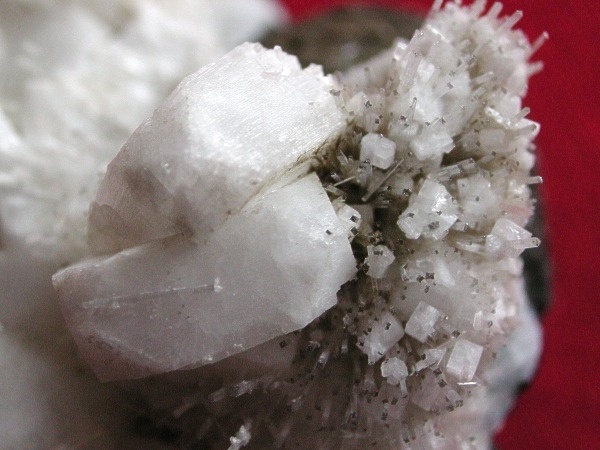
White APOPHYLLITE and NATROLITE |
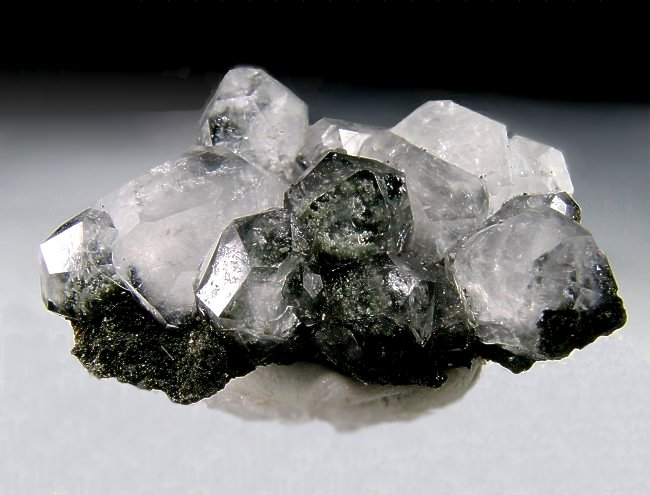
ANALCIME |
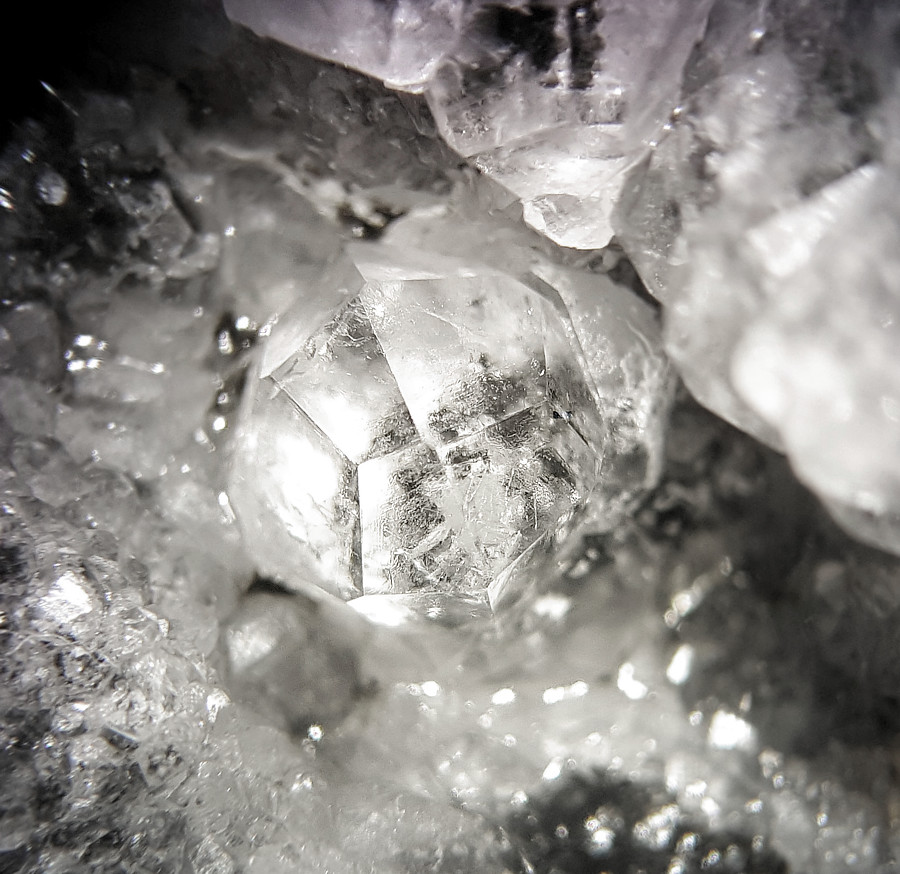
ANALCIME |
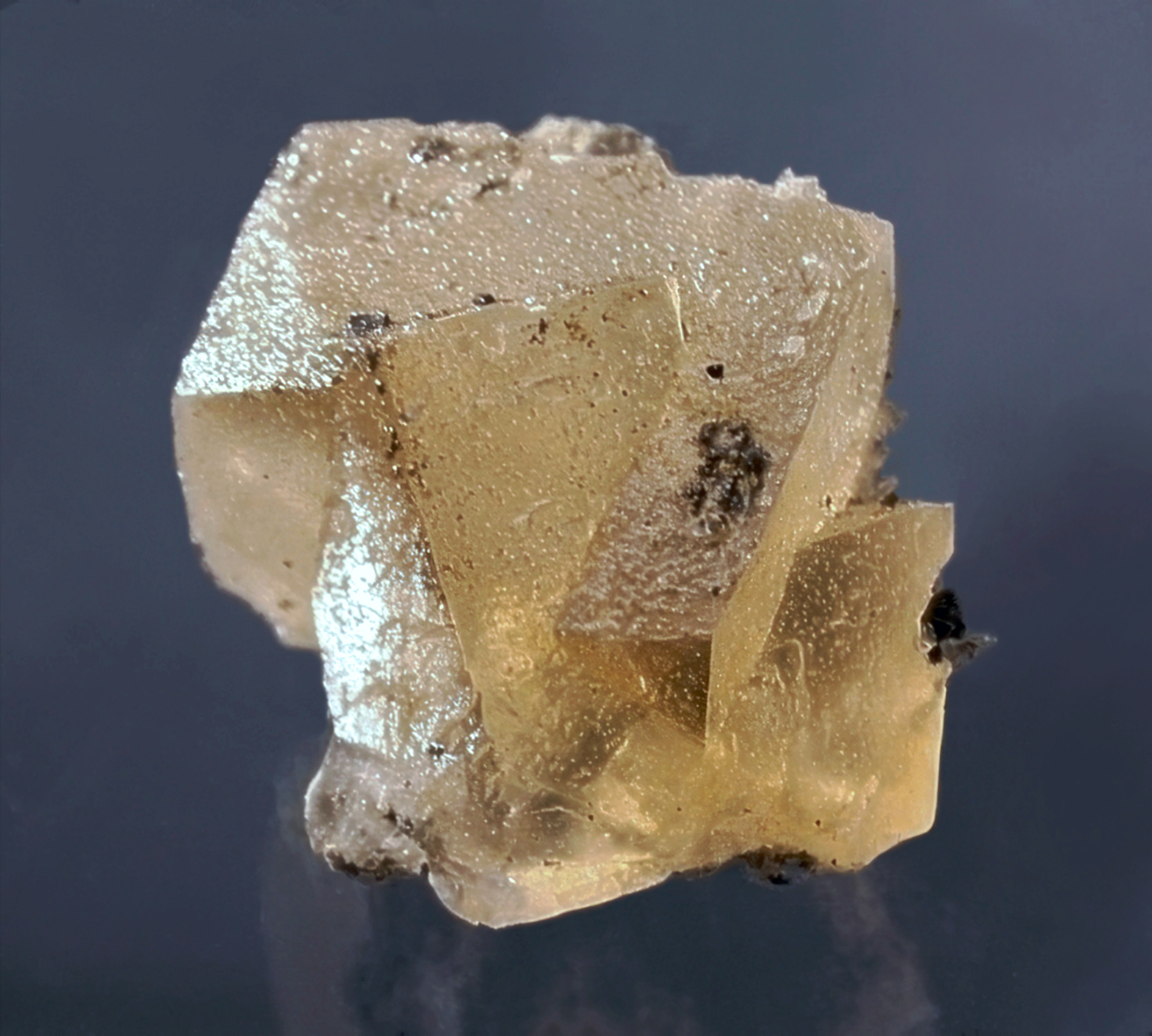
Twinned CALCITE |
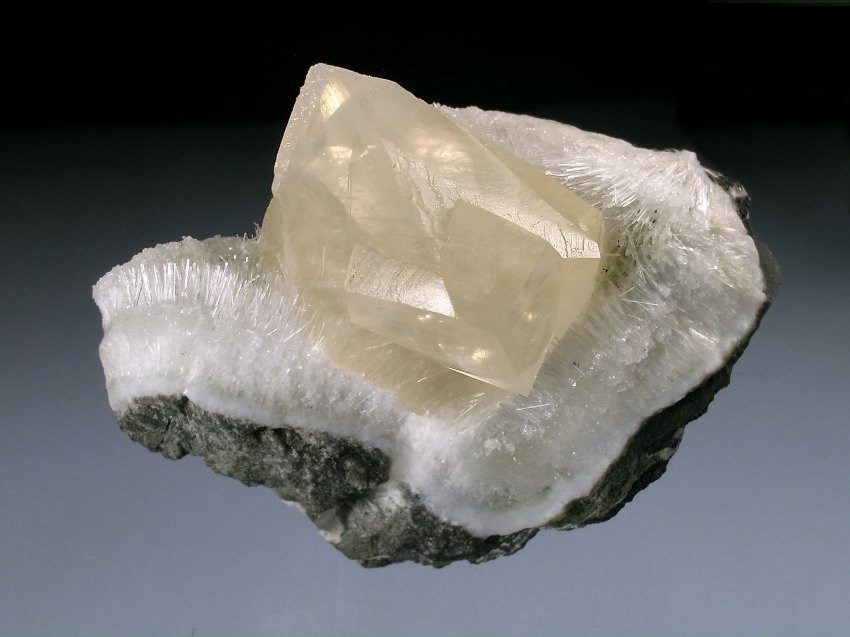
CALCITE, NATROLITE |
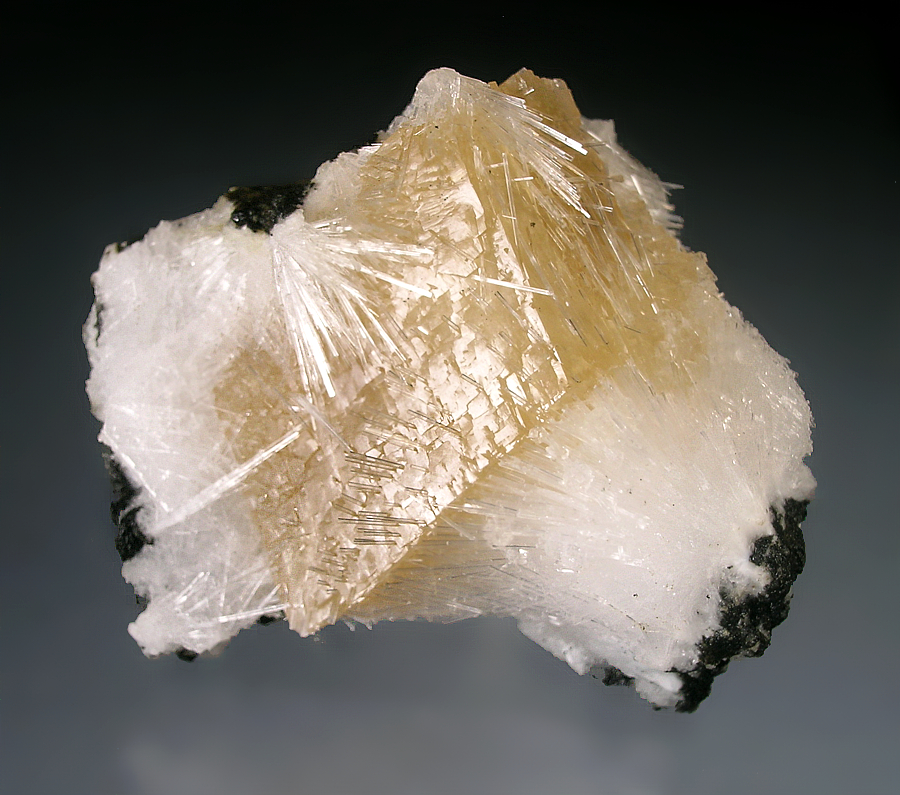
CALCITE, NATROLITE |
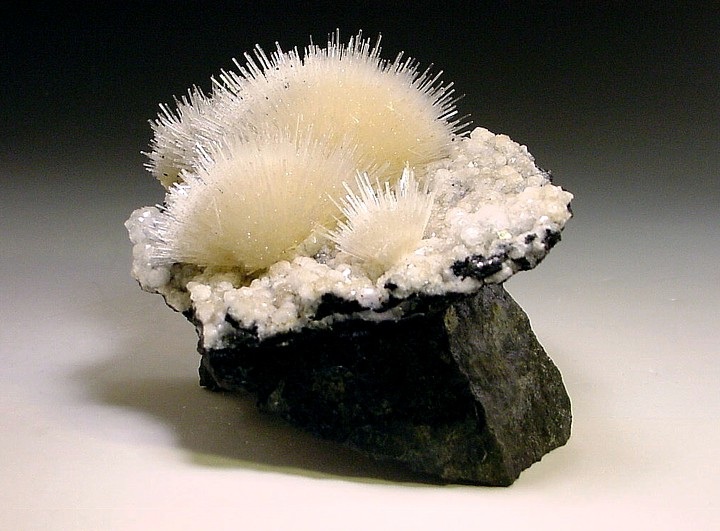
NATROLITE, ANALCIME |
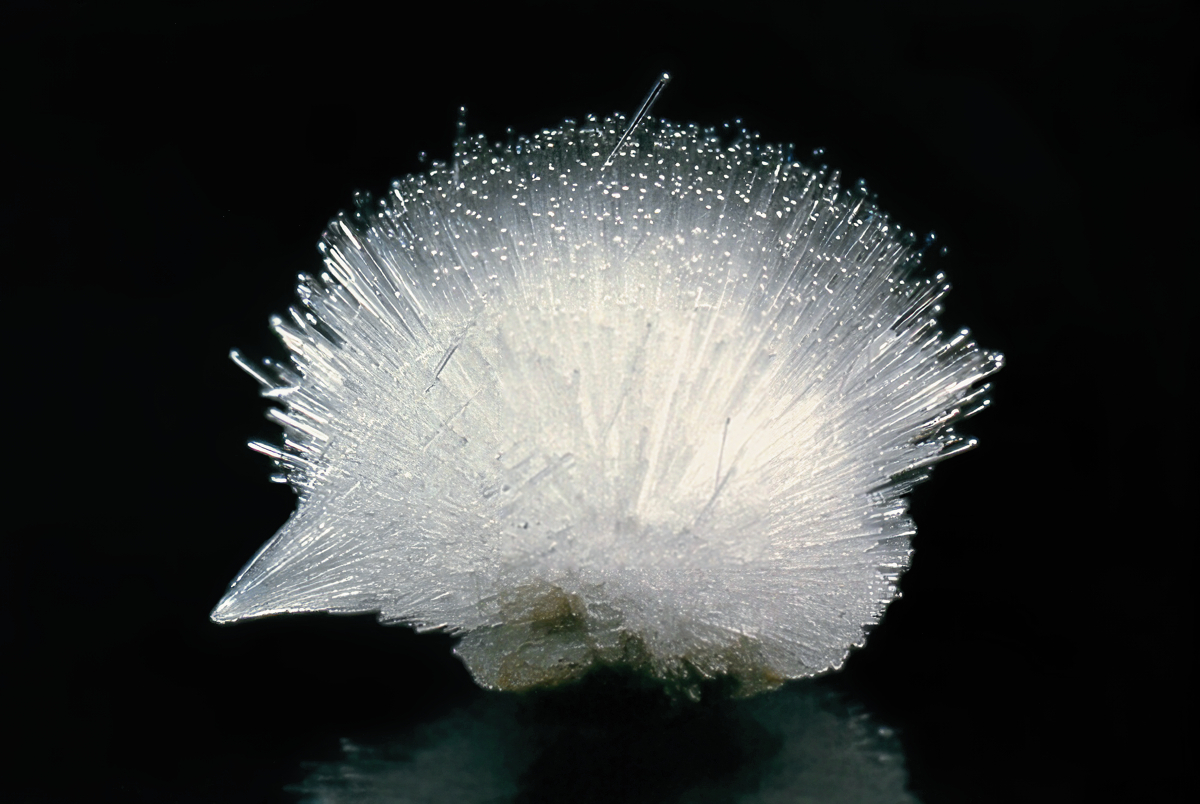
Radiating NATROLITE |
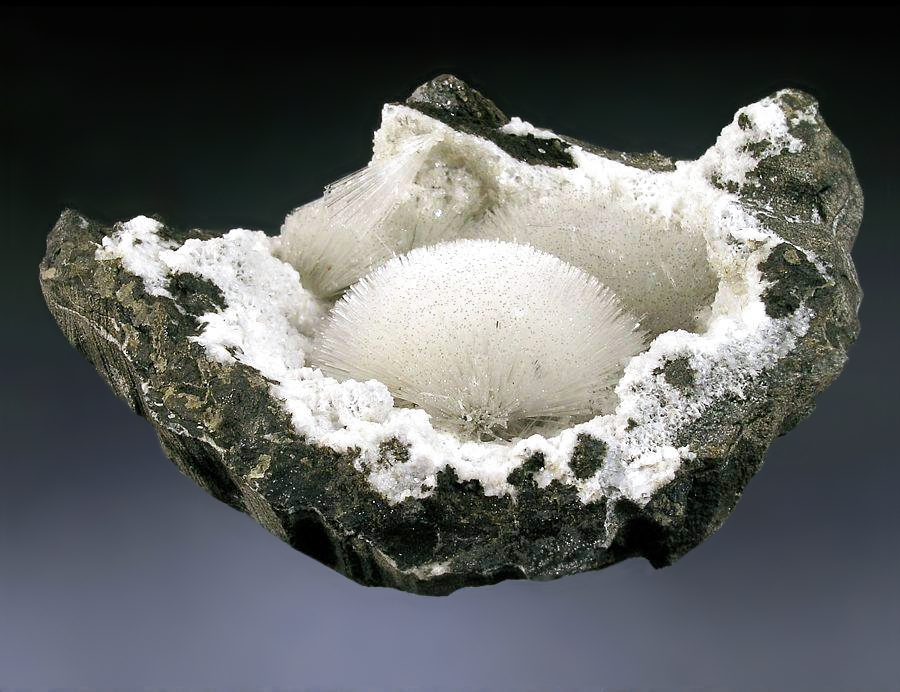
Radiating NATROLITE on basalt matrix |
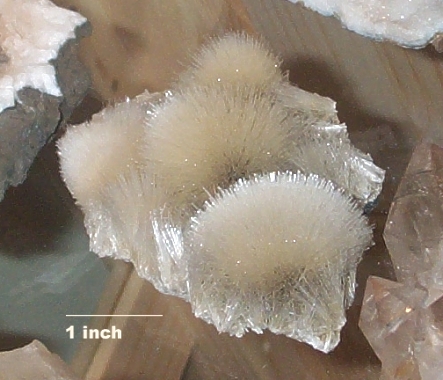
Radiating NATROLITE |
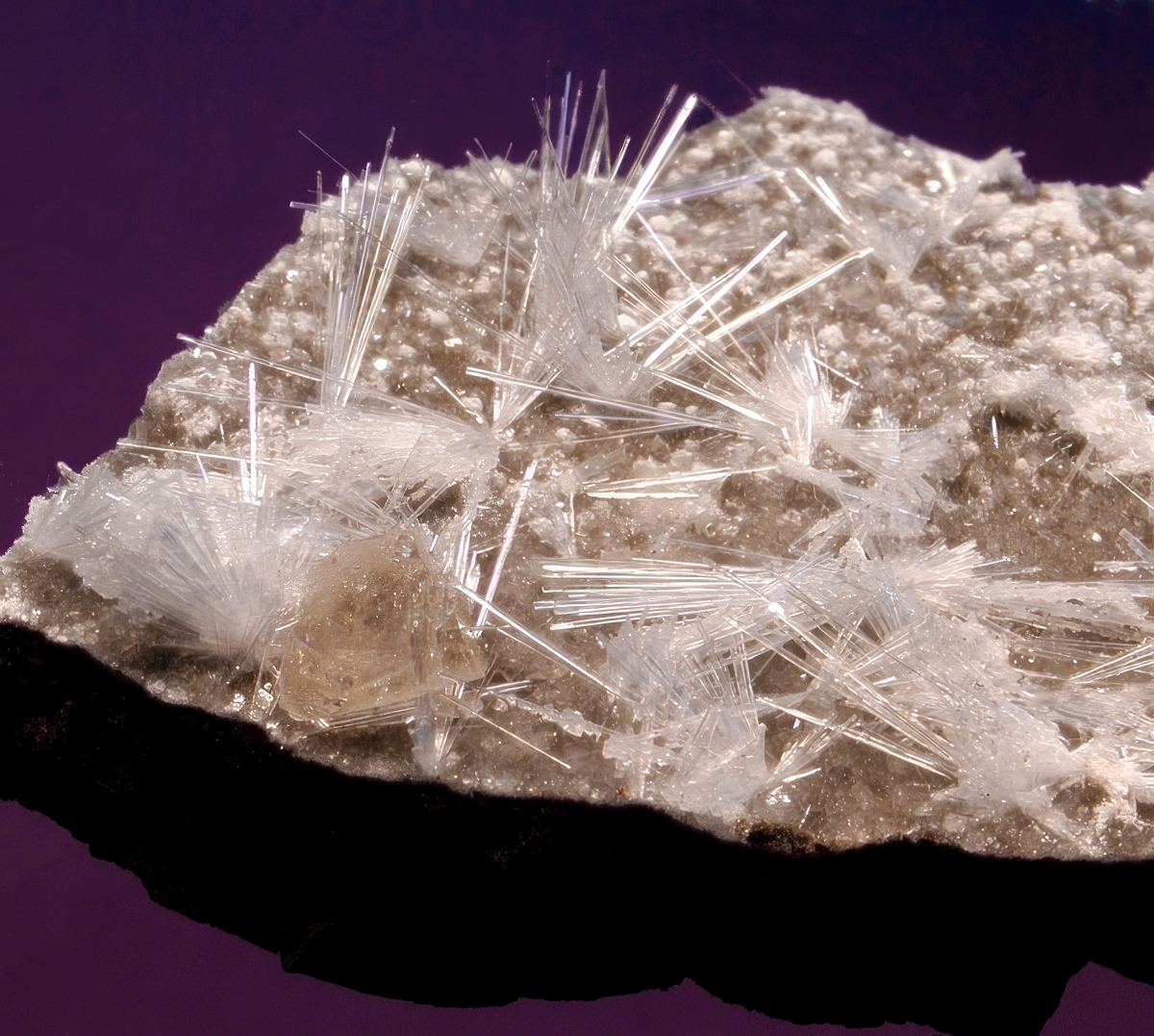
NATROLITE, CALCITE |
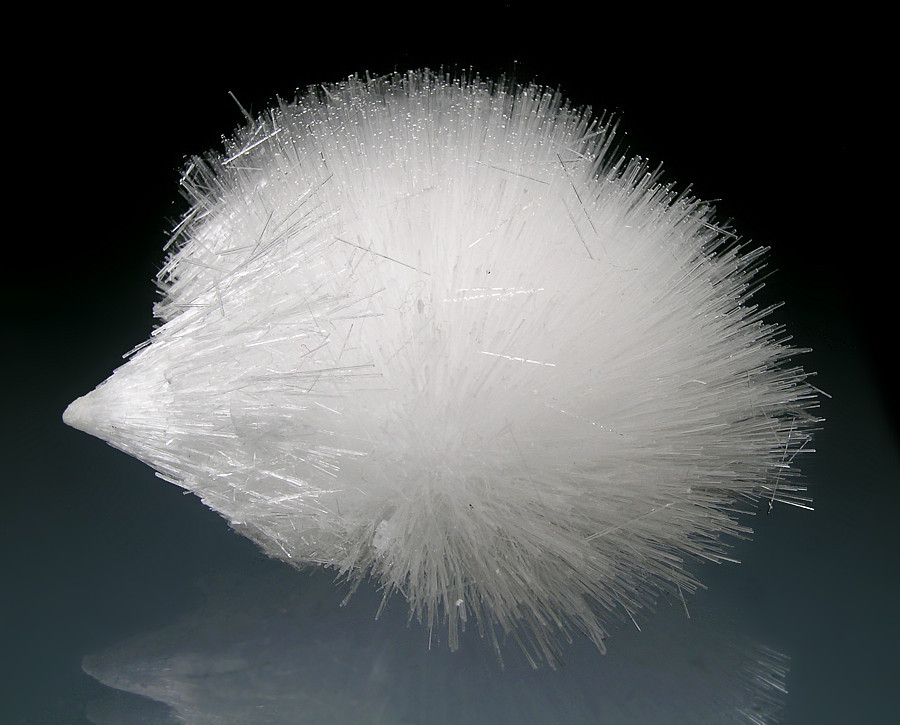
NATROLITE |
|
Babcock R. S., Burmester R. F., Engebretson, D. C., Warnock A., Clark K. P. (1992) A Rifted Origin for the Crescent Basalts and Related Rocks in the Northern Coast Range Volcanic Province, Washington and British Columbia. Journal of Geophysical Research, B, Solid Earth and Planets. 97(5), 6799-6821. Lasmanis, Raymond (January, February 1988) Minerals of the Crescent Formation, Robertson Pit, Mason County, Washington. Rocks & Minerals. 63(01), 25-30. |